By Julia Train
Hard shell clams are a favorite food for locals in New Jersey. Most know about clamming as a recreational activity and commercial use, but did you know about the process of clam farming through aquaculture?
Hard clams are naturally found in bays and estuaries along the Atlantic Ocean and Gulf of Mexico, being most abundant from Cape Cod to New Jersey, according to the New Jersey Department of Environmental Protection (NJDEP).
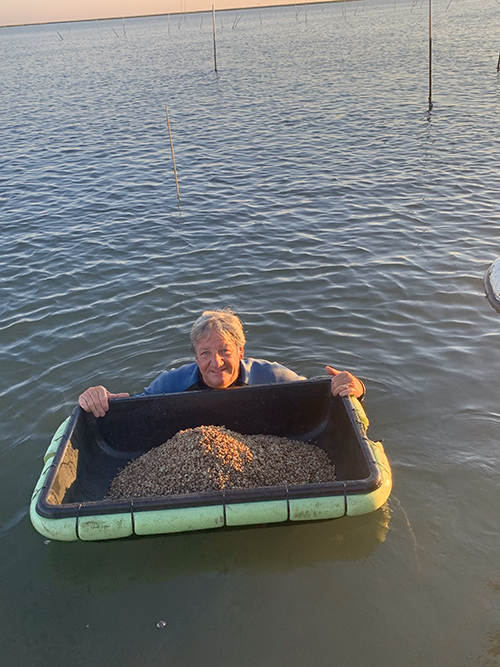
Bill Mayer, Sr. is ready to plant clams.
Along with being a tasty treat, catching your own clams– or clamming in the wild– is also a fun recreational activity that has seen a decline in recent decades due to various factors such as loss of shellfish harvest areas closed due to poor water quality, overharvest and shellfish habitat loss from coastal development, according to NJDEP.
Clam Daddy’s, located in Brigantine, is a family-owned-and-operated clam farm that has supplied local restaurants and Brigantine’s farmers market with hard clams for 50 out of the 52 weeks of the year since 1984.
The business was started by Bill Mayer out of necessity because he started out as a wild clammer, but when the supply of wild clams was starting to dwindle and he couldn’t keep up with the demand, he switched to farming.
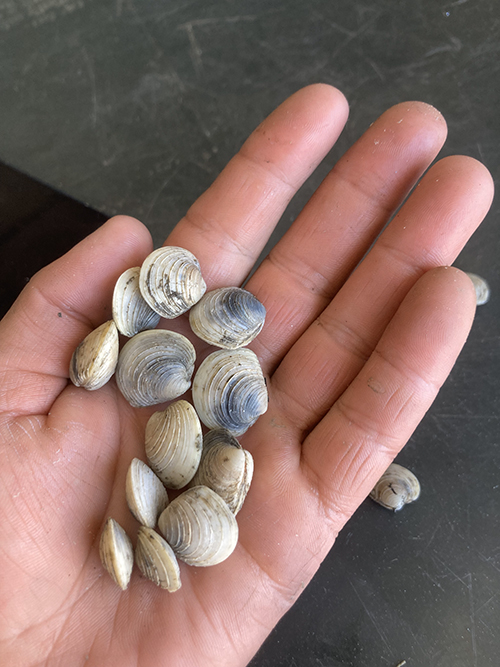
Clams ready to be planted
Clam Daddy’s uses an aquaculture process, which is a method used to “produce food and other commercial products, restore habitat and replenish wild stocks, and rebuild populations of threatened and endangered species,” according to the National Oceanic and Atmospheric Administration (NOAA).
Hard clam aquaculture was established in New Jersey in the 1970s and is the most important aquaculture industry within the state, according to NJDEP.
Mayer learned through a lot of trial and error because there weren’t very many people doing it at the time, according to his son, Billy Mayer, Jr.
How clam farming works
Hatcheries like Clam Daddy’s harvest clams, seed and then plant the clams back in the bay after breeding them in the lab.
In nature, clams spawn in the spring. When coastal bays warm up, the shellfish release their eggs and sperm into the water, where they unite to form larvae.
After several weeks in a free-floating state, the clam larvae settle to the bottom, nestle into the sand or mud, and begin to grow to market size, according to NJDEP.

Buckets of clams ready to be cleaned and sorted to meet the needs of local businesses.
Hard clam aquaculture mimics and accelerates this process in the lab.
Once clams reach pencil-eraser size, 8-12 millimeters, they’re bay planted in plots with a screen over them to protect from predators like stingrays, crabs and birds.
Clams cannot be harvested until they reach a legal (market) size of 1.5 inches, which takes about three to four years.
When the clams are ready to be harvested, Mayer’s team waits until low tide and uses a bull rake, which is 24 inches wide with teeth on it and a cage, to collect them. Once the tide gets low enough, harvesters catch the ones they missed by hand, a process called treading.
They then put the clams in a bucket and bring them to land to clean, sort, bag and get them ready for market.
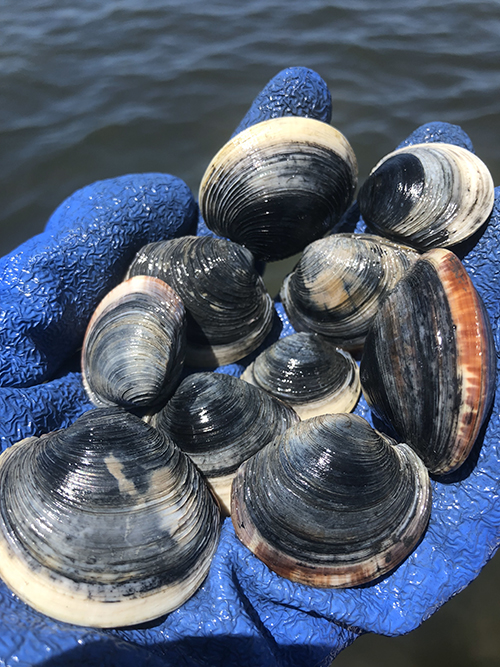
Clam Daddy’s can be seen at Brigantine’s farmer’s markets.
Although Billy Mayer, Jr. says it takes a lot of time to farm clams, he enjoys it.
“It’s a passion of mine. I love being out in the water. We have a beautiful office, I like being on the bay watching the sunrise,” he said. “Every single day, you’re doing the same things, but it’s different because you’re dealing with Mother Nature.”
For those who want to clam in the wild, Mayer said to make sure you have a shellfish license to clam and visit the NJDEP website to make sure you’re clamming in clean and certified waters, because some areas restricted due to pollution.
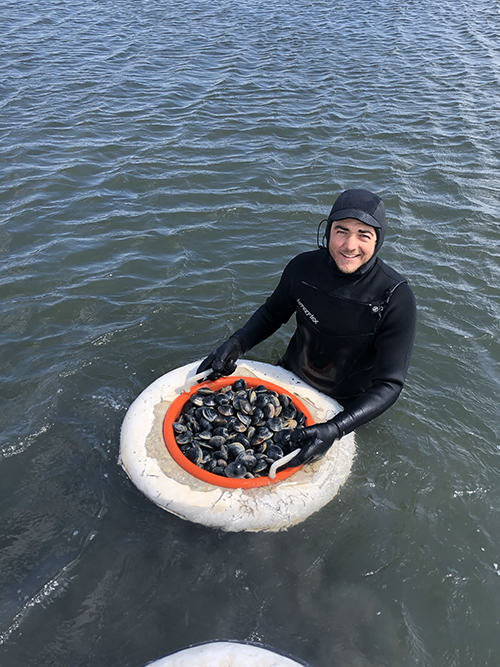
Billy Mayer, Jr. harvesting clams in the bay behind Brigantine.
Julia is a student at Rider University, majoring in multiplatform journalism with a minor in social media strategies. At school, she writes and is news editor for The Rider News and is the News Director for the radio station, producing news updates. She’ll be graduating in the spring. Connect with her on Instagram @juliatrain
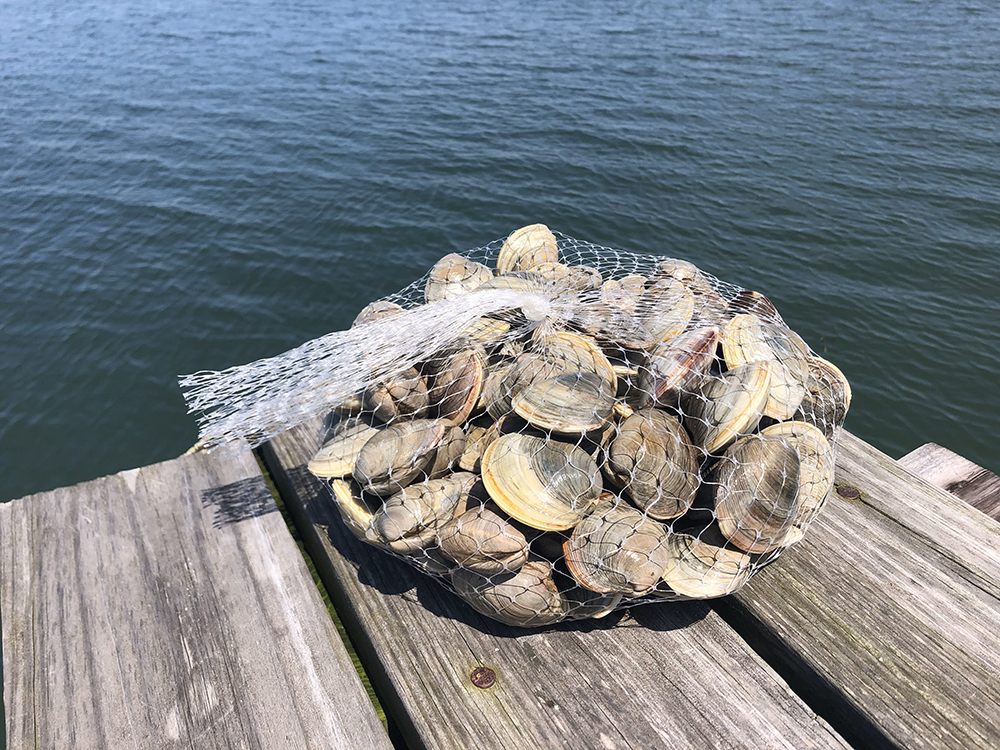
After being harvested, the clams are bagged, cleaned and sorted to get ready for the market.










